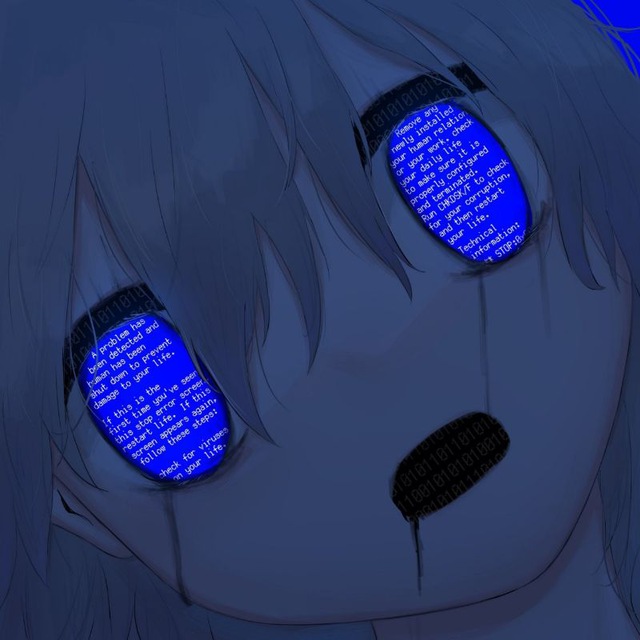I was talking to my dad yesterday and he talked about how he dual booted windows and Linux in his college days. I immediately left to download Ubuntu, I feel so dumb for forgetting it’s an option. I literally only use windows so I can play Fortnite with friends. PSA: you can have both Linux and Windows, or you can use a vm in Linux. Be (mostly) free from Microsoft’s clammy hands.
I always found having each OS have a separate physical drive is much better, but partitioning is fine if you must.
Third world countries: We must 😔…
It’s a luxury indeed. Hopefully maybe a little less now that decent storage has come down in price a lot
Have to agree on that. SSD and RAM prices have gone down significantly.
Removed by mod
Partitioning is great with a boot partition for each OS,and linux chainloading to windows. Then I have aseparate NTFS drive as secondary drive in Windows and Linux, in case I need to work on data in either OS
I installed a second SSD into my new laptop and installed Debian on it. I set the new drive as the primary boot drive so windows doesn’t get a say and only loads when I select it from the boot menu. This way windows can’t trash the boot loader when it updates.
So much this, having each OS in a separate drive saves so many headaches
As others have said, I also highly recommend physically separate drives. I have found both Linux and Windows affect each other sometimes especially when you’re getting your bearings with dual booting.
For instance, after running Linux the clock in Windows will be wrong. And Windows will eat the Linux boot partition especially after feature packs (formerly called service packs), which come out about 1-2/year.
Just install linux 2nd and have it probe foreign OS, and create a linux only boot partition. Grub will then make a chainloader entry to windows boot partition. Linux won’t care if you select windows chainload option, and Windows won’t know it ia being chainloaded. No OS overlap. just set Grub Boot entry as primary boot in BIOS, EFI.
Just in case anyone stumbles in to this, there is a fix for the time issue:
The better way is to fix Windows to use a sensible system time. https://wiki.archlinux.org/title/System_time#UTC_in_Microsoft_Windows
Damn, the Arch Wiki is even the best documentation for Windows!
Anecdotally I’ve been dual booting Windows 11/Linux on my laptop for a couple years and I’ve never had issues with Windows affecting the boot partition and I feel like this is much less common with EFI. You can even have a separate EFI partition for Linux and choose boot order from the BIOS.
I’ve always done partition based dual booting since I first started using Linux and the last time I remember having an issue with Windows fucking with boot setup was like early/mid 2010s and it’s only happened a couple times in like 10 years of on and off dual booting.
Things used to be a mess.
Dual booting back in the BIOS days was an ever going struggle as both operating systems wanted to own the bootloader. You could boot Linux from ntldr but you’d be better off having a recovery disk nearby tor the few times a year Windows patched its bootloader.
With UEFI, this is a problem of the past. Old Windows installs, upgraded from the BIOS days or installed in CSM compatibility mode, still used the MBR, which kept the dual booting problems going (you can’t easily chainload an MBR Windows install from UEFI).
Even with modern UEFI some motherboards decide to make life harder by only booting the fallback boot option rather than letting the OS register itself. These are broken implementations with the same problem MBR has, and lead to problems like “my OS won’t start unless I install my bootloader to this particular directory and file name” and then you have Linux and Windows fighting for control again.
Partitioning for Linux used to also suck, because MBR only allowed four real partitions. You could use extended partitions, but you needed a bootloader smart enough to see those to boot from that. With Linux taking at least two partitions in common configs (/boot, /) and Windows taking two or three (hidden volume, boot config volume, system volume), you’d almost certainly need to mess with extended partitions to get a dual boot working.
Linux NTFS support is still broken in some cases (recently corrupted a Windows 7 install through the Debian installer disk) so dual booting also involved managing certain partitions from certain operating systems.
These days, dual booting should be super easy to set up. You can even install Linux before installing Windows without making the installer crash or leaving your system unbootable. There are still challenges (Windows wants secure boot and fast resume on, Linux doesn’t) but they’re generally not that bad unless your hardware is broken (i.e. some WiFi cards don’t work/only work in Linux unless you reboot from Windows because the open source driver can’t get the firmware to load right).
I only boot windows for Fortnite and The Crew 2 because of BS DRM. Everything else runs great.
Most people forget you can also run a Linux VM inside Windows if all the other options don’t work for you.
It protects your private data from virusses, doesn’t let Microsoft’s telemetry spy on your usage and browsing, and gives you more control.
Just limit what you do in Windows to what needs it running natively and do everything else inside the VM.This generally works for people who only need command-line or headless access though. I’ve been waiting for proper GPU virtualization and partitioning to actually work on consumer gpus for so long now that I’m doubtful it will ever be a thing. And the hardware industry has gradually transitioned to single GPU setups now so PCIe lanes for multi-GPU setups are harder to come by, especially with recent motherboards dedicating more and more PCIe lanes to NVMe slots. Still, even GPU pass-through with VFIO is not a trivial thing at all to get up and running. Its a travesty that CPU virtualization is so mature and far along in the consumer space, juxtaposed with a seemingly absolute big fat zero on the GPU virtualization front.
You could get away with using VMWare for their proprietary GPU virtualization feature but besides simple sandboxes for testing, I will not personally get too far into it as the experience is not great.
It only protects your data if you encrypt the virtual disk. And then you could still lose it to a ransomware attack.
Be aware that Windows will snitch on you if you run it in a VM. I don’t know about Forkknife in particular, but if a game’s TOS prohibits it, or the anti-cheat is having a bad day, it might get you banned. There are ways to trick Windows into thinking it’s running on metal, but it’s always a risk.
That’s why I went with dual booting over a vm. Battleye and ez anti cheat both try to detect even Microsoft’s hyper-v.
thats the reason i dont play those Games anymore(although i would love to). i cannot live with the fact, that i am not in charge on my own device
Windows doesn’t “snitch” on you. Invasive anti-cheat measures demand to act as a root-kit on your pc that reads out literally everything about your system, including CPU, hardware ID of the mainboard, etc. So of course it will see that it’s installed on a VM and you gave it the right to send that info wherever during installation of the game.
Since the point of this measure is to keep people from evading a ban by reinstalling, it will not like seeing that it’s in a VM.Taskmgr will literally list that the OS is running in a VM. You don’t need a rootkit to detect it.

Removed by mod
i dual boot bc of the adobe software i use for work and wine/proton doesn’t work with the shit ton of skyrim mods I play with. straight up crashes.
re: Skyrim, could just be that some SKSE mod you’re using needs some newer .net runtime or similar
could also be not enough vram (even if you have enough ram wine/proton could have it’s vram allowance set too low)
If you don’t already have one get a crashlogger, for SkyrimSE 1.5.97 I would recommend .NET Script Framework (and use SSE Engine Fixes skse64 preloader instead of DLL Plugin Loader)
If you already knew about all this and still having issues then don’t mind me
Use Grub2Win (https://sourceforge.net/projects/grub2win/) whenever Windows manages to break dual booting. It’ll stop fucking up afterwards, as it’ll be installed within one of the windows boot partitions.
I had an old windows AME install on a separate drive I forgot about. Updated grub in peppermint (Debian) voila all of the sudden my windows was added , no fuss at all. Simple nowadays
imo dual booting is kinda clunky. Id rather have a vm of windows tbh. I dont like restarting my pc to swtich OS.
But hey if you like it, more power to you man.
Only did it bc anti cheats. I would use vms otherwise.
Ah I gotcha. Another option im considering is using a separate pc for windows and using a kvm to switch between them. That may be a good option for you as well if you can swing it.








